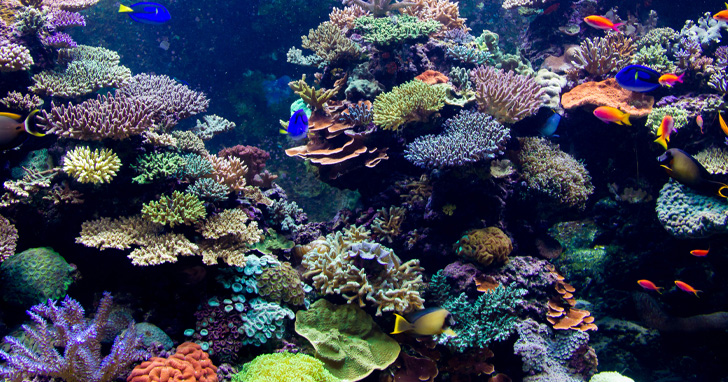
Step Into the Wonderful World of CoralsA Beginner Reef Keeper’s Guidebook Welcome to the wonderful world of corals! For aquarists thinking of journeying into reef keeping, LiveAquaria® is here to help. Join us as we explore different types of corals, helpful tips to get started, and a short question and answer section with one of our in-house husbandry professionals, Steve Krogh. What are the different types of corals?
Coral for Beginners - For those just venturing into reef keeping, LiveAquaria® has selected corals that are designated as Corals for Beginners. This collection of beautiful aquatic life is carefully selected and recommended by our aquatic experts for their hardiness and overall ease of care. Pursue your reef aquarium hobby with greater ease when you shop this category of aquarium corals proven to be hardy and undemanding. Nano Corals - Nano Corals offered by LiveAquaria® are ideal for smaller aquariums with built in filtration and power compact lighting systems or metal halides. All of these corals adapt well to these smaller setups and are hardy corals that can take minor temperature fluctuations, which are common with these setups. The use of reef rock is highly recommended as a supplemental food source and the added filtration benefits that live rock offers. LiveAquaria® CCGC Certified Captive Grown Corals - LiveAquaria® Certified Captive Grown Corals are aquacultured, meaning they are propagated, raised, and inspected at our LiveAquaria® Coral Farm & Aquatic Life Facility in Rhinelander, Wisconsin, which is the largest retail aquacultured coral facility in the country! They have the added benefit of being shipped via FedEx Priority Overnight to ensure their health and safety and come with an extended 30-Day Risk-Free Guarantee. SPS (Small Polyp Stony) Hard Corals - In general, SPS Hard Corals have a calcareous skeleton with small polyps. Their growth formations are usually branching or plated. SPS hard corals are generally considered more difficult to keep than LPS or Soft Corals and are not recommended for beginners. LPS (Large Polyp Stony) Hard Corals - LPS Hard Corals are generally larger calcareous corals (meaning they contain calcium carbonate) with large fleshy polyps. The degree of extension of the tentacles depends upon the amount of light, current, and whether the coral is feeding or not. Most LPS Hard Corals have long sweeper tentacles that are used to keep other organisms a safe distance away. Mushroom Corals - Mushroom Corals are hardy and make ideal corals for the beginner reef aquarist. Mushroom Corals that have long tentacles are aggressive towards other types of corals, so provide them with adequate space. Soft Corals - Most Soft Corals grow rapidly in reef aquariums and are relatively hardy and are good choices for the inexperienced reef aquarist. It is important to leave adequate space between different species of hard and soft corals to avoid problems with growth or aggression. Polyps - Polyps are colonial corals, and most of them are extremely hardy, making them ideal candidates for the beginner reef aquarist. All Polyps contain symbiotic algae and require moderate to strong lighting. Some Polyps, such as Button Polyps, will benefit from meaty foods like brine shrimp or plankton. Sea Fans - Some Sea Fans require up to eight inches of sand for the substrate. Most Sea Fans are nocturnal, only extending their polyps during the nighttime hours. They consume plankton and require strong currents to carry their food. NPS (Non-photosynthetic) Corals - NPS Corals possess two qualities that aquarists should be aware of, one of which is that they don’t require light in order to thrive, and the other is that they need to be fed when they live in an aquarium. NPS Corals can live in non-photic zones like caves, overhangs, and deep reef areas where sun doesn’t reach. When they are exposed to light, such as that found in an aquarium, they cannot process food found in the environment on their own, so as a result will need to be fed. Reef aquarists starting out should consider Large Polyp NPS Corals (as compared to Small Polyp varieties) because they can catch larger food particles (such as adult Artemia) and are easier to feed. Reef Keeping Tips to Get You Started
If you are taking the plunge into reef keeping, here are some handy tips to help you get started. Find a trusted supplier - One of the most important steps reef hobbyists new to the industry can take is to find a trusted supplier. LiveAquaria® has a number of resources on-line that can help guide beginners. Helpful articles on water parameters and stocking reef aquariums can be found, as well as care statistics for prospective inhabitants of your reef aquarium. It doesn't stop there. Video resources with expert advice are also available on liveaquaria.com and its social media channels. When it comes time to stock your aquarium, acclimation procedures and compatibility charts can prove invaluable. A category of corals specifically designated as good for beginners is available for reef novices. These supplier resources should help ensure your new corals can enjoy the healthiest life possible. In addition, LiveAquaria® offers one of a kind aquatic life in Diver's Den® and also hosts Live Dive Sales on social media that allows purchases of these aquatic stock at exclusive sale prices. Learn Care Requirements of Coral - New reef aquarists should take the opportunity to learn care requirements of their specific coral and meet them. Meet the Experience Level Requirement of the Species You're Housing - These designations indicate whether the required experience of an aquarist is beginner, expert, or ranges somewhere in between. Know the Temperament of Your Coral - Indicates the temperament of your aquatic life, so it can be housed with compatible species. Temperament is also a consideration in determining the correct placement of your coral within the aquarium. Recommended Placement - Reef hobbyists should become aware of placement requirements of the corals they acquire. For some, adherence to live rock is recommended, whereas others may thrive when placed in holes or crevices. Learn whether shaded or sunny areas in the aquarium are best for the coral species being housed. Ensure that the placement allows for growth and aggression (reaching tentacles). Some corals have preferred placement (such as bottom, middle or top) of the water column. Discover the Color Display of Your Coral - Information contained here can help determine the color(s) it will display as an adult or fully mature specimen. Know What and How Often Your Coral Eats - Specifies the feeding requirements of the specimen so they will be fed appropriate foods at specific intervals. Check Compatibility of Tankmates - This information will indicate whether or not corals will or may become damaged or killed by incompatible aquatic life housed in the same reef aquarium. A trusted supplier like LiveAquaria® can provide guidelines as to compatibility among aquatic life. A Compatibility Chart is most helpful in finding reef safe fish. Meet Specific Water Parameters - Aquarists should learn the necessary water parameters (including any needed supplements) to ensure the health of their aquatic life. Maintain stable water parameters and stable nutrient levels. Most aquatic life cannot take wide fluctuations in water quality and can even lead to death. The best way is to prevent this from happening. Find out the correct water parameters and keeping them is the best prevention to poor health or even death. Learn the Coral's Maximum Size - Aquarists should know how big the specimen will grow to ensure it can live its life out in the tank it is introduced into or be prepared to move it when necessary. Family - Knowing the family of your aquatic life is helpful to research additional information on the specimen. Lighting Requirements - Aquarists should be sure that the lighting levels are matched to the corals in the aquarium, as well as to other inhabitants. The types and intensities of different lights need to be researched and then followed to enhance coloration and health of your corals. LiveAquaria® has articles that help reef enthusiasts learn how to display their corals with the best lighting for taking pictures and videos. One such article is Factors that Influence Coral Coloration. Water Movement - Water movement can range from low to high and should be adjusted to the levels that match the care levels of the select coral and other tankmates in the aquarium. Q & A with husbandry expert Steve Krogh from the LiveAquaria® Coral Farm & Aquatic Life Facility in Rhinelander, Wisconsin.
LiveAquaria® Coral Farm & Aquatic Life Facility Operations Manager Steve Krogh has an extensive background in aquarium keeping as a retailer, professional technician, and member of the Greater Minnesota Reef Society of Duluth, Twin Cities Marine Aquarium Society, and the Northern Wisconsin Reef Society. Steve has maintained a variety of freshwater aquariums since the age of 12, including Goldfish, planted community aquariums, Discus, and a variety of African and South American Cichlid biotopes. He has also maintained numerous marine FOWLR and marine reef aquariums for over 26 years, having propagated a diversity of corals, including soft, LPS, and SPS. Steve oversees the day-to-day operations, including selection and merchandising, husbandry, and maintenance in the LiveAquaria® Coral Farm & Aquatic Life Facility, and facilitates the continuing education of Customer Service Representatives and the technical support team. With expertise in system design, setup, and upkeep involving technical aspects such as reef lighting as well as husbandry techniques that ensure optimal care of aquatic life, Steve is an invaluable resource for our ever-expanding LiveAquaria® Coral Fram & Aquatic Life Facility. The growing selection of diverse, quality offerings in our Diver's Den® What You See Is What You Get (WYSIWYG) store is a testament to Steve's passionate efforts. How fast do corals grow?
Just like people and live animals such as fish, corals are living individuals, and their growth patterns can vary from individual to individual. All corals grow at different rates. Some grow one quarter of an inch per week, while others may take as long as an entire year to grow that much. Do I need to have a frag tank in order to grow corals?
No. Having a separate aquarium specifically for keeping coral fragments (frags) is not required. Specimens can be introduced directly into an active saltwater aquarium that is established, if acclimation guidelines are followed, water parameters have been met, and other aquatic life has been checked for compatibility. Are Clownfish reef compatible?
Yes. Clownfish make wonderful choices for reef aquariums. Their colors will add excitement and contrast to the vivid and dramatic colors that corals display. Are there some coral colonies that cannot be aquacultured?
All corals reproduce in the wild, so they can be reproduced (aquacultured) in captivity. Some just take so long to reproduce it isn't economically feasible to do so. Here are some questions specific to certain corals, and Steve's responses. Featured coral: Pom Pom Xenia Coral
What is the care level for Pom Pom Xenia Corals? Are they all the same, or different? - Pom Pom Xenia Corals have an easy care level and as a result, are a good first choice for beginner reef keepers. How long do Pom Pom Xenia Corals live? - Fact or fiction: Do Pom Pom Xenia Corals have short lives? No. In fact, LiveAquaria® has some broodstock of this type of coral that are ten to fifteen years old. Featured coral: Orange Polyp Montipora Coral
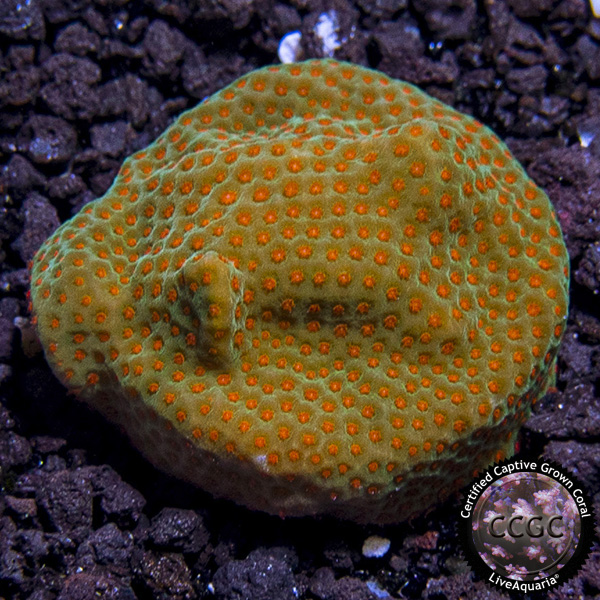 What’s unique about how Orange Polyp Montipora Corals look? - Orange Polyp Montipora Corals are unique. Most often, the whole Montipora is orange, not just the polyps. What level of the aquarium do Orange Polyp Montipora Corals get placed in (bottom, mid-level, or top)? - Mid-level, although they can adapt to top or bottom with small fluctuations in coloring. Featured coral: Blue Ridge Coral
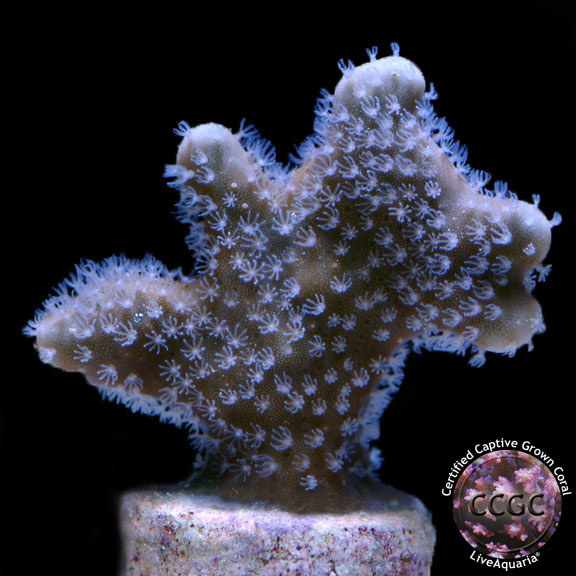 Do Blue Ridge Corals have a peaceful temperament? - Yes, they are not an aggressive coral. What's the difference between wild collected and aquacultured corals in regard to their growth pattern? - Growth pattern is more about waterflow and light intensity than it is about whether the coral is wild or aquacultured. Is this a coral that LiveAquaria aquacultures in-house? - Yes, LiveAquaria® offers an aquacultured Blue Ridge Coral option on liveaquaria.com Why do the Blue Ridge Corals have a moderate care level? - Because it requires more light than Soft Corals and also needs calcium to grow and survive. Featured coral: Tricolor Goniastrea Coral
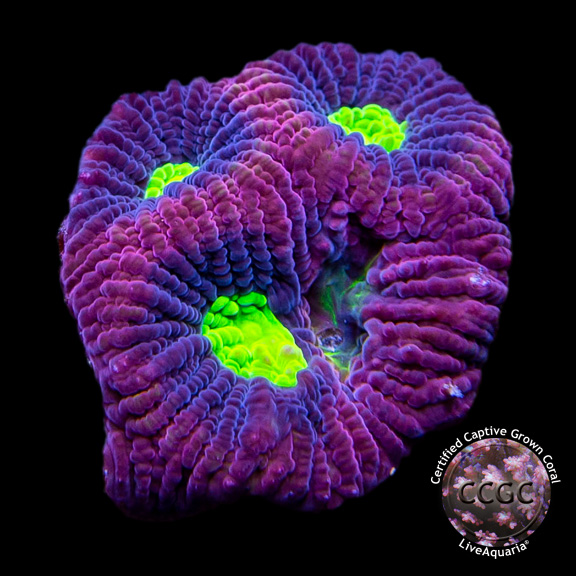 Is the LiveAquaria Tricolor Goniastrea Coral more like an Acan Coral or a Favia Coral? - The Tricolor Goniastrea Coral It is more similar to a Favia coral. Featured coral: Duncanapsammia Corals
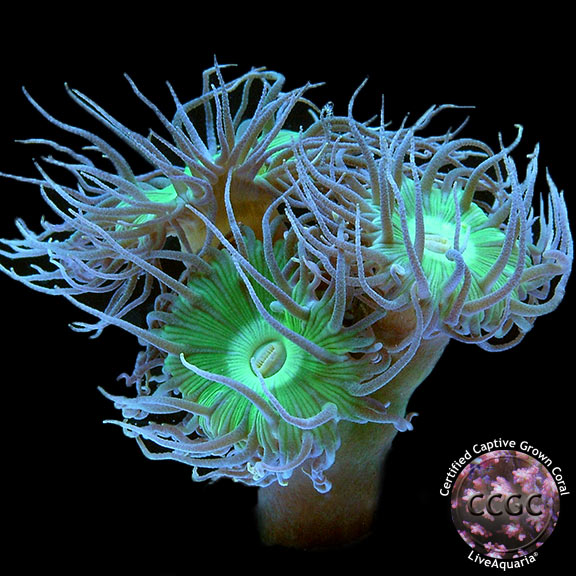 Why are Duncanapsammia Corals desired by reef keepers? - Duncanapsammia Corals are sought after by reef aquarists because they are beautiful and resemble a flower or a tree. In closing
Live corals are the most important contributors to the structure of a saltwater reef in nature as well as in reef aquariums. The appearance of some species of corals varies dramatically depending upon the environment and are undoubtedly a major contributor to color and interest in reef environments. Related Articles
|
|
|


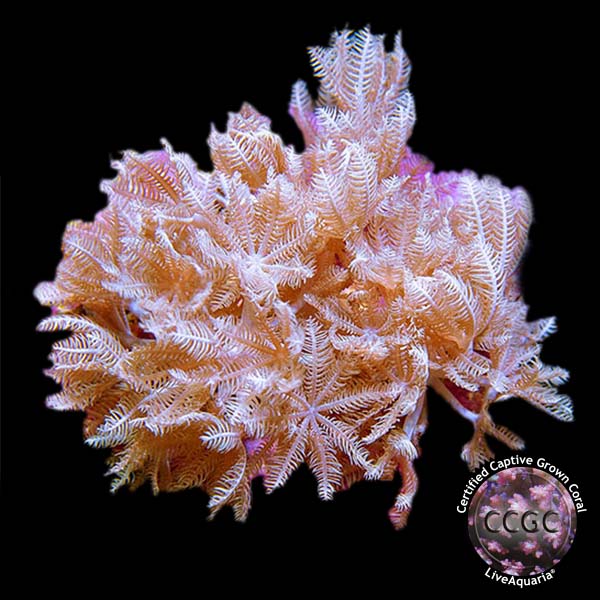 How big do
How big do 